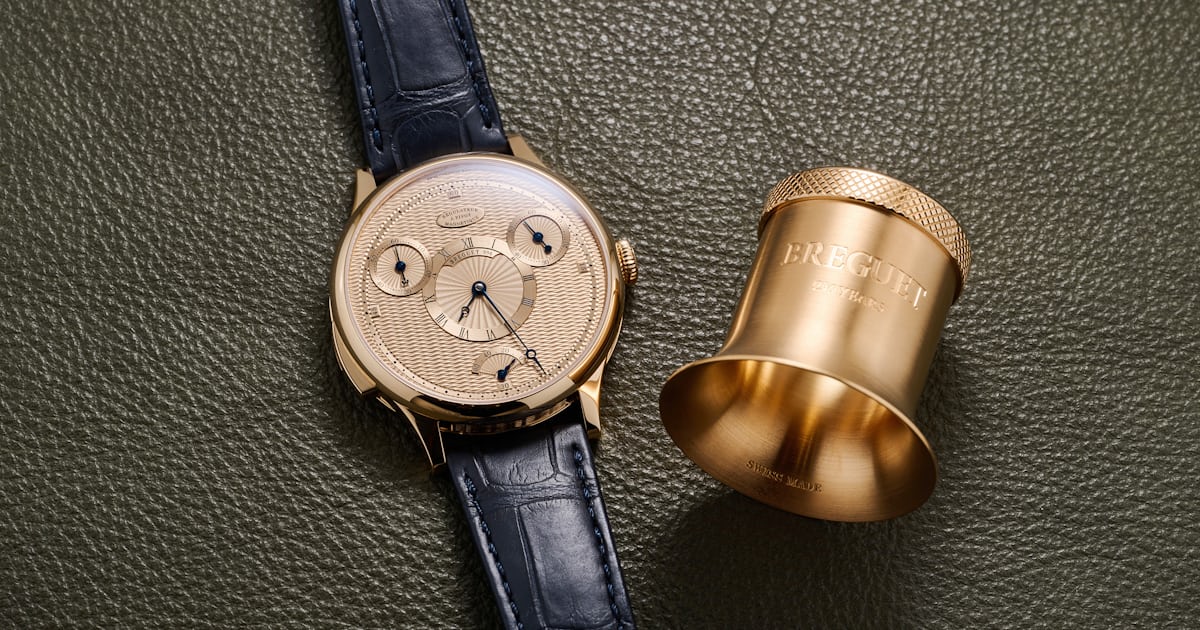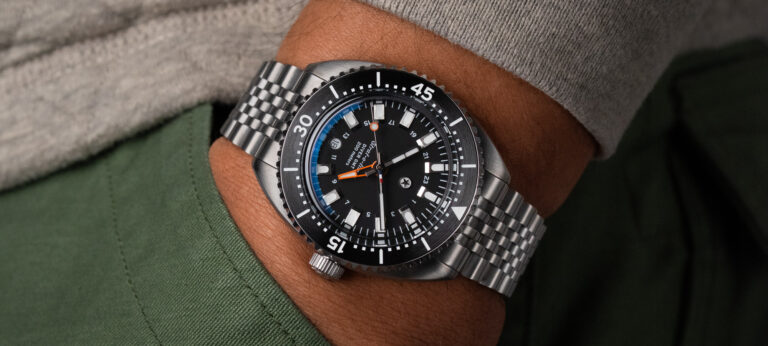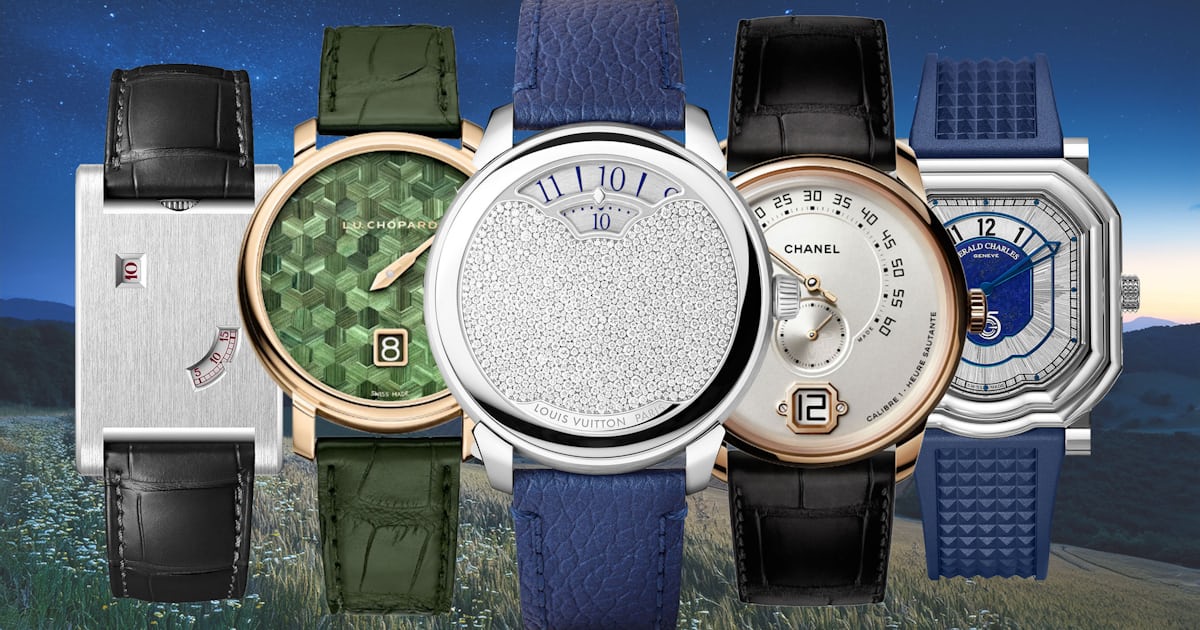Editor’s pick — Accessory quick take: key highlight (movement/specs for watches, materials/finish, limited run, pricing tier) in 1–2 lines.

Pardon me for saying what everyone else has been saying lately, but Breguet is on a tear this year. It’s a great time to do it, too, being the brand’s 250th Anniversary and all, but you have to give credit where credit is due. For the true deep-cut watch lovers, the return of Breguet’s groundbreaking 10Hz movement, featuring a more historically minded design, is pure fan service. Even 15 years after the first magnetic balance movement from Breguet, it remains incredibly impressive.

The Breguet Museum in Paris features a pocket watch that inspired the design of the Classique 7225. It’s one of the first four watches equipped with a four-minute tourbillon, only the fifth tourbillon watch ever sold by Breguet, and features a constant-force escapement using a fusée-and-chain mechanism.
It also featured a piston-activated observation seconds, which we’ll get to a bit later. Accuracy was of utmost importance in the 1800s, with chronometry prized above almost everything. Breguet was always pushing the technical boundaries in pursuit of those ends. Examples of similar watches were made, mostly for royalty, between 1802 and 1809, and one of them is coming up for sale at Sotheby’s thematic Breguet auction, with an estimate of CHF 350,000 to 700,000.


In 2016, Ben did a full Week on the Wrist with the predecessor Breguet Classique Chronométrie 7727, which he called one of the best deals in fine watchmaking. But the design was, frankly, a bit of a mess. I actually wouldn’t have minded the watch if not for the magnetic pivot showing through to the dial front and the far more out-of-place “10Hz” italicized font. It feels more at home on a NASCAR hood than an elegant dial like Breguet’s.

The new Breguet Classique 7225 takes the same movement and innovative technology and harmonizes the design around the brand’s 250th Anniversary aesthetics. That means a lot of special, soft “Breguet gold” (somewhere between pink and yellow), from the dial to the case. But obviously, the updates go beyond just material.

The dial layout returns to the style used in early pocket watches, featuring a symmetrical dial split down the 12-to-6 o’clock centerline. The brand also returned to the tone-on-tone style of the original pocket watches. At 2 o’clock, the watch features a constant running seconds hand, but opposite to it, at 10 o’clock, is a flyback seconds counter. It’s not exactly a chronograph, but rather what is called an “observation” seconds. You can instantaneously reset and restart the function with the pusher at eight o’clock, and though it can’t be stopped, you can use it to observe elapsed time. At 6 o’clock, the power reserve indicator is visible. But you may also notice that the guilloché isn’t symmetrical top to bottom. Instead, the ring for the minute hand is weighted toward the bottom.
By my count, there are three types of guilloché on the dial, plus the chapter ring with Roman numerals for the hours, one with dots for the minutes, and subsidiary seconds displays. The guilloché on the main surface of the Quai de l’Horloge continues onto the case band as well (which we’ll examine in a bit). Ben mentioned in his previous review (with a watch that had six different guilloché patterns and a similar bottom-weighted dial) that the secret signature on the dial was a bit too obvious, but they’ve improved on that and made the dial more harmonious. Even the dial plate, which reads “Régulateur à Pivot Magnetique,” feels like a thoughtful touch.



Part of why Breguet emphasized the 10Hz on the dial was to draw attention to the achievement of the caliber 574DR movement for customers who might need reassurance that they had purchased something significant. And it was an important watch for the industry, featuring a significant movement, but it’s one that’s so complicated it likely flies far over the heads of even average watch lovers. With that in mind, it’s best to let the watch stand on its own two feet, which it does here. It doesn’t just stand; in fact, it runs (quickly, I might add).

Breguet’s 10Hz (or maybe more impressively put, 72,000 bph) movement, now the Caliber 74SC, is a technical marvel. Aside from the layout of the display, the principles remain the same. A magnetic-pivot balance essentially floats over two jeweled bearings, with only the smallest part of the pivot ends touching the jewels. Not only does the magnetic field maintain the balance in place as a shock-resistance device, but it also enables incredibly low-friction movement. The flat double balance spring and pallet lever are made of silicon, which allows them to run without oiling and with significantly reduced inertia, enabling them to beat faster. The escape wheel is also in silicon, and if you look closely, you can see a phenakistoscopic animation morphing the shape of the wheel from 1775 to 2025. Hard to see, but frankly pretty creative.
The movement is finished with a hand-engraved view of the brand’s manufacture in the Vallée de Joux. However, you’ll also notice an engraved blue lacquer, stylized Breguet flying “B” emblem, which is Breguet’s new hallmark of quality and accuracy. The date of the patent for the magnetic pivots is engraved on the gear train. The movement is manually wound and features a 60-hour power reserve. The most impressive part, the upgraded accuracy of ±1 second from -1/+3, is actually a formality more than anything. I was shown the charts from the brand’s original launch, and the movement ran within that ±1-second spec at the time, but Breguet decided to give a more conservative quote. This time, they’re flexing on everyone a little bit.


You can see the magnetic pivot point and the silicon hairspring with the unusual triangular support shape.

The escapement of the new movement, with the year 2025 somewhat visible.

The magnetic fields in the pivot, as seen in our story from 2016.
The case itself is one of the only things I could critique. The 41mm by 10.7mm Breguet gold case wears incredibly well and even boasts 30m of water resistance, despite its unique pusher. The lugs drop down just slightly, and the hand-guilloché on the caseband provides a nice visual break on an otherwise highly polished case. It’s a matter of personal preference, but I am a fan of the more traditional Breguet empire case, straight lugs, and a fluted coin-edge caseband.



The new Breguet Classique 7225 is delivered on a navy blue, large-scale alligator leather strap with an 18K Breguet gold pin buckle. It features an individually numbered red leather 250th anniversary special edition inspired by the historical red Moroccan leather Breguet presentation boxes. The watch is, maybe surprisingly, not a limited edition. The price is $99,000, a significant increase from the $40,000 for the initial release in 2016. But it’s hard not to see it as a perfect representation of what Breguet historically always stood for: technical innovation, chronometry, and beauty, all in one package.

For more on the Breguet Classique 7225, visit the brand’s website.
Source: www.hodinkee.com — original article published 2025-11-07 16:00:00.
Read the full story on www.hodinkee.com → [source_url]



